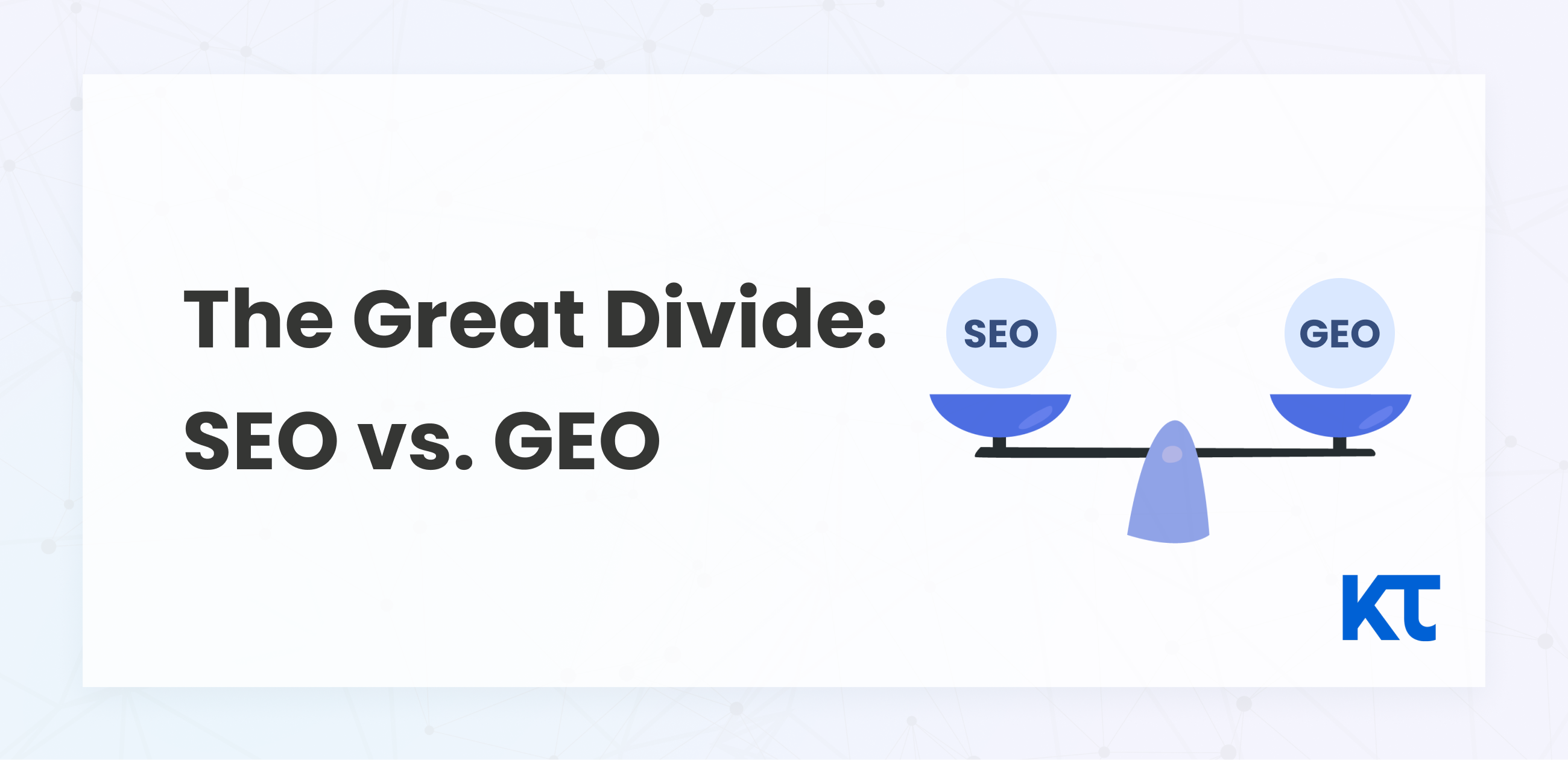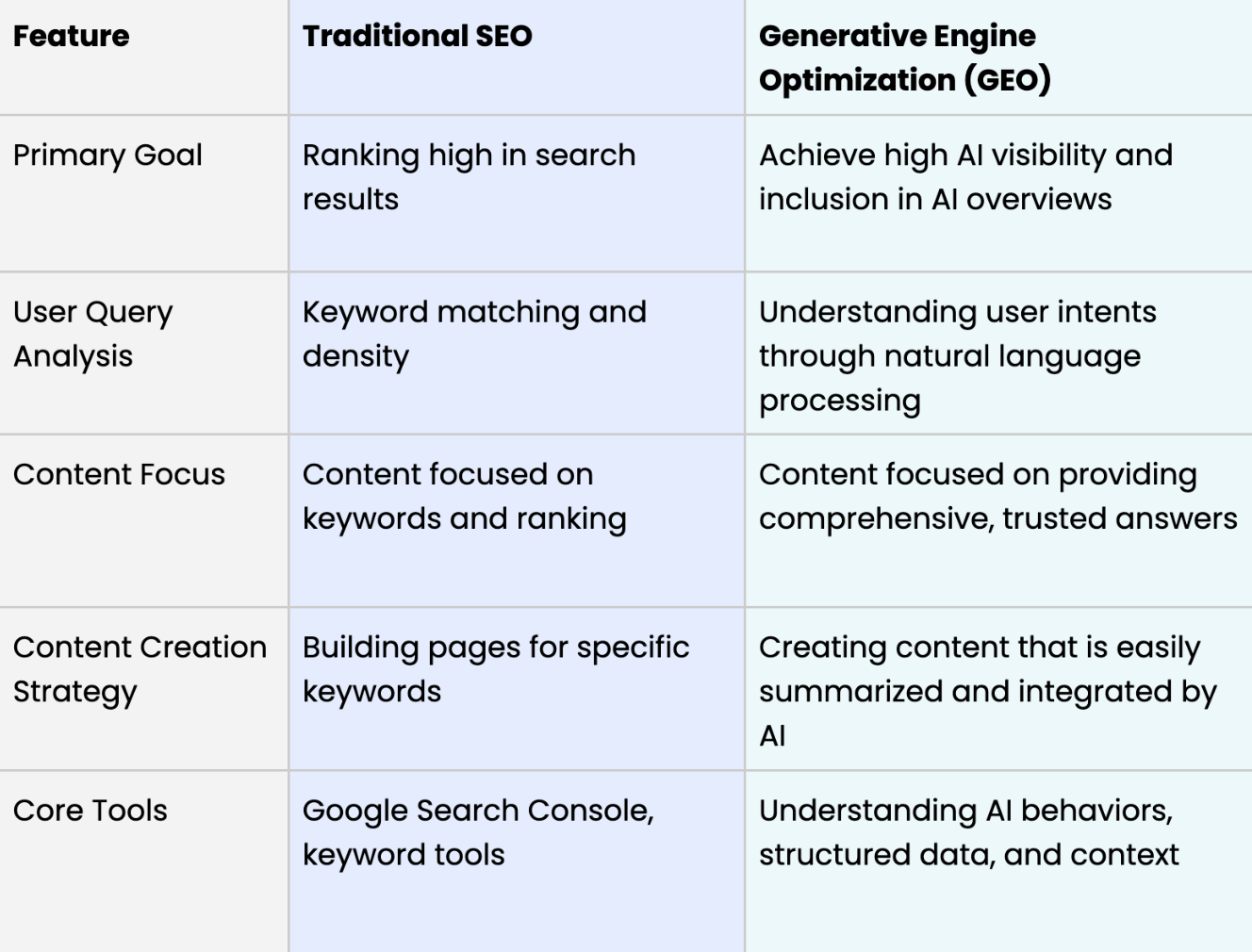
For years, the playbook for digital marketers has been clear: optimize for traditional search engines. The goal of traditional SEO was to secure a top spot in search results, driving organic traffic through meticulous keyword research and technical optimization. But with the advent of generative AI and advanced large language models, a new force has emerged: the ai driven search.
This shift introduces a new imperative for marketers: generative engine optimization (GEO). At ktau.ai, we see this not as a replacement, but as an evolution. To help you navigate this new landscape, let’s break down the core differences between traditional SEO and GEO.


The fundamental difference lies in the way information is consumed. Traditional SEO focuses on a user clicking on a link to get an answer. Ai driven search often provides the answer directly in a search snippet or ai overview, making the on-page experience secondary to the initial visibility.
Ultimately, the marketer's role is shifting. Rather than just targeting traditional search engines, the focus must expand to include generative engine optimization (GEO). By understanding and adapting to this new landscape, you can ensure your brand remains a trusted and visible source in the era of ai driven search.
Ready to optimize for GEO? Try Ktau.ai’s GEO tracking & automation tools today →

Ktau.ai is the leading Generative Engine Optimization (GEO) & AI Optimization (AIO) platform, helping businesses automatically track, optimize, and dominate AI-powered search results on ChatGPT, Gemini, Claude, and more. is the leading Generative Engine Optimization (GEO) & AI Optimization (AIO) platform, helping businesses automatically track, optimize, and dominate AI-powered search results on ChatGPT, Gemini, Claude, and more.

